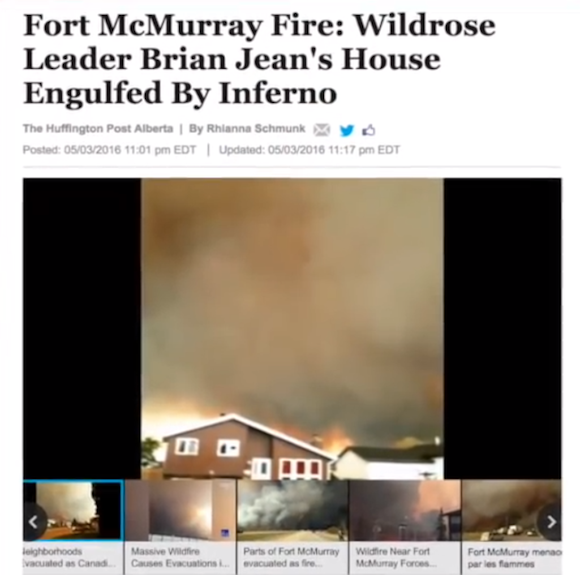It looks like you're using an Ad Blocker.
Please white-list or disable AboveTopSecret.com in your ad-blocking tool.
Thank you.
Some features of ATS will be disabled while you continue to use an ad-blocker.
share:
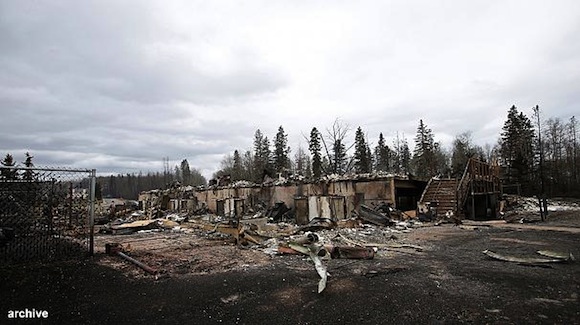
The nuclear waste site at the heart of Canada’s wildfires
18 May 2016
Just south of the Canadian city of Fort McMurray, in an area partly ravaged by flames, sits a nuclear waste site.
Situated at the extreme north of the Beacon Hill landfill tip, it contains some 42,500 m3 of radioactive minerals, including uranium and cesium.
But does it pose a threat to society today? According to information gained by euronews reporter Renaud Gardette, the site lies in the middle of the huge wildfires, blazing uncontrollably since May 1.
What if?
Several questions have arisen. Was the site burnt in the wildfires? Have radioactive particles been emitted into the atmosphere? What is the risk to the environment?
The response from the Canadian authorities
(Translated from French)
Canadian Nuclear Laboratories and our Low-Level Radioactive Waste Management Office are responsible for managing historic low-intensity radioactive waste located in the Beacon Hill dump at Fort McMurray. The site is at the north end of the Beacon Hill landfill site, which itself is south of the city of Fort McMurray and west of Highway 63. The approximate coordinates are: 56 degrees 39 ’10 “ N, 111 degrees 20 ’56 “W.
◦ CNL manages these sites on behalf of Atomic Energy of Canada Ltd, the federal corporation that is ultimately responsible for the safe management of historic low-intensity radioactive waste.
◦ The low-intensity waste at Beacon Hill consists of uranium ore residue, mixed with soil and placed in isolation (in a separate cell), which is covered with a thick layer of low-permeability soil, then another, dense layer of clean earth. In total, there are at least 45 centimetres of clean soil over the contaminated soil.
◦ According to the information available, it appears that the site was affected by the fires. That said, this does not pose any immediate risk to the health and safety of people and the environment. There are also no concerns about the physical integrity of the cell.
◦ Given the composition of the contaminated soil, that is to say, ore residue mixed with earth, there is no risk that it will catch fire. In a similar way to a field or garden, fire can ignite the grass, but the earth itself does not catch fire.
◦ We continue to monitor the situation closely.
That certainly makes us feel better.
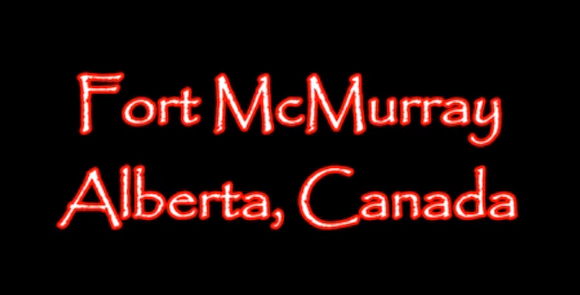
And now, for some of those conspiracy angles.
As a Volunteer Firefighter/First Responder for 51 years, I have never been asked to sign a Non-disclosure Agreement - and I worked in Katrina in some 'unique' situations. That, in itself, is a big red flag that bears further investigation.
Now, here's where it gets interesting:
(@ 3:20 t.co... #wrp #bizarre #abpoli
"Anyone visiting Fort McMurray is required to sign a non-disclosure agreement."
This sure sounds like the 'Secrecy Act' that the Japanese government put in place to intimidate anyone attempting to report the truth about the triple melt-throughs at Fukushima (xxx). What could 'they' be hiding that would provoke such a noose on the media?
Evidently, we are not alone in this feeling, as our friend Tom Lupshu so eloquently elucidates.
Non-Disclosure Agreement For Video Fort McMurray Wildfire Devastation - YouTube
Tom Lupshu
Published on May 23, 2016
In this video I am talking about the latest news out of Fort McMurray in Canada. The location of an Extreme Wildfire that caused the evacuation of over 90,000 people. They have cordoned off the area of devastation with roadblocks and are requiring all media allowed to go in to sign a Non-Disclosure agreement. That in it's self should tell you they are hiding something
STAY AT THE READY…
For News And Views Join Us At Bunker Report On Facebook
www.facebook.com...
And from our new friend Jostler:
I'll drop this here since it's on topic: Evidently, reporters are being forced to sign non-disclosure agreementsbefore being allowed into Ft. McMurray's devastated areas. The report is dated the 9th of May so I may be sharing old news here...dunno. I first questioned this but it seems confirmed by the video associated with the link below:
globalnews.ca...
The meat of the info begins about 3 min, 30 seconds into the video. Something really stinks here. I have been reluctant to buy into some of the speculation surrounding this fire but this astonishes me. Who in the world has the authority to make such sweeping censorship rulings? And why? What in the world could be so damaging if revealed by reporters? Damaging to whom?
I was very aware of the "13 days of fire sacrifice to the Beast" which concluded on Beltane (May Day) which is the day this fire began. The fact this fire has been dubbed "The Beast" is almost too much coincidence to ignore. I'm just connecting dot points of information at this point but this is getting curiouser and curiouser as Alice might say….
And the suspicions keep growing.
Canadian government is hiding something at the Fort McMurray fire
Niall Bradley
Sott.net
Fri, 20 May 2016 20:59 UTC
Sott Exclusive: 'Cone of silence' over Fort McMurray following devastating wildfire - ANYONE going to ruined city must sign non-disclosure agreement
One of the largest wildfires ever observed in Canada, the area burned by the Fort McMurray wildfire in Alberta, aka 'The Beast', currently stands at over half a million hectares, has spread to neighboring Saskatchewan, and may not stop burning 'for months'.
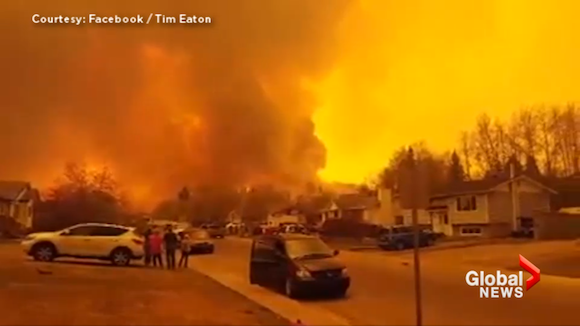
Canada has seen bigger wildfires, but nothing like this has ever affected a populated area. Not since the Great Fire of Valparaíso in Chile in 2014 has such a large city taken a direct hit from a wildfire. Alberta Premier Rachel Notley initially said it 'could be two weeks' before residents of Fort McMurray would be allowed to enter the city and check out if their home/business was still standing.
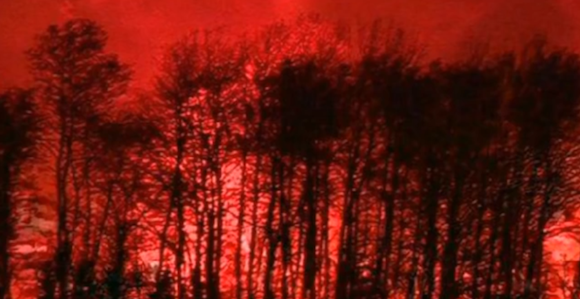
Now she's saying it could be - at the earliest - almost a month before anyone's allowed back in (June 1st). And by the sounds of things, they may not be permitted to return until later still.
Oddly, a 'cone of silence' was imposed on the city shortly after the wildfire forced its entire population to flee on May 3-4.
Fort McMurray was once Canada's fastest-growing city. Now, it's a burned-out shadow of what was.


This is interesting:
According to World Nuclear.org:
"Uranium in Canada
(Updated 7 March 2016)
• Canada was the world's largest uranium producer for many years, accounting for about 22% of world output, but in 2009 was overtaken by Kazakhstan.
•
• Production comes mainly from the McArthur River and Cigar Lake mines in northern Saskatchewan province, which are the largest and highest-grade in the world.
•
• With known uranium resources of 582,500 tonnes of U3O8 (493,900 tU), as well as much continuing exploration, Canada has a significant role in meeting future world demand."
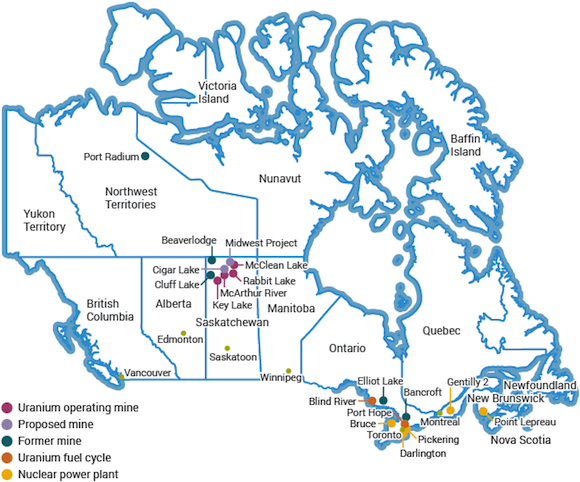
Canada is a country rich in uranium resources and a long history of exploration, mining and generation of nuclear power (for coverage of nuclear power, see information page on Nuclear Power in Canada). To 2014, more uranium had been mined in Canada than any other country – 485,000 tU, about one-fifth of world total. Canadian Uranium Production - World Nuclear Association

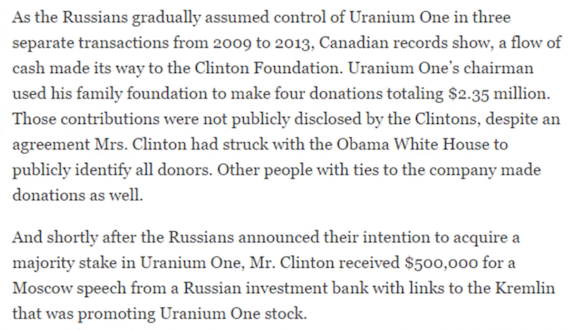
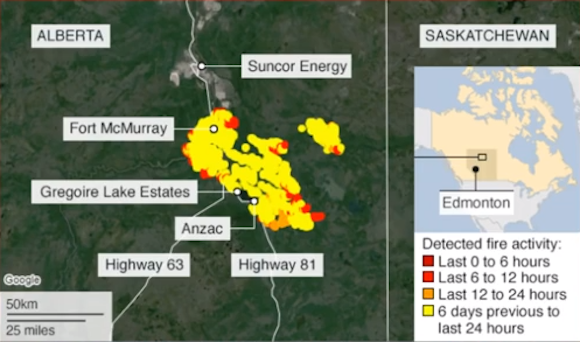
And the locals are increasingly becoming aware of this travesty!
Allyson Jayne2
+Dean Madge Yeah, I live in Edmonton also, have all my life and I smell a rat here also. I really think that the Alberta election was rigged somehow as well, to bring in the NDP's who would sacrifice the oil patch-no problem. Any self-respecting Albertan would never vote NDP no matter how ticked off they are at the Tories. The PC's valued and protected the oil-patch because they know it is the kingpin of the Canadian and Albertan economy. That bitch Notely actually had the audacity to accuse the leader of the Wildrose party of FEAR MONGERING on May 3/2016 when he asked why she cut 80% out of the wildfire budget and was waiting so long to declare a state of emergency. Something is going on here and it ain't good!]/ex]
OMG! What timing!
Canada has been turn to shhhs. Overpriced. Overpay. No free education meaning less fighters. Everything is too far which means lack of experience. I
know cause I live there. Too much road block. They shut down their own air force. They suppress their own stuff and sell out to US. Good luck Canada.
It isn't a country anymore.
www.youtube.com...
www.youtube.com...
business.financialpost.com...
news.nationalpost.com...
www.youtube.com...
www.youtube.com...
business.financialpost.com...
news.nationalpost.com...
edit on
31-5-2016 by makemap because: (no reason given)
a reply to: makemap
Didn't look at the you tube links but those other two links are from 2012 and 2014.
Yes, it's expensive here, and massive distances between major cities. That's Canada. Too big. Too far between cities. One reason electric cars don't work outside of the south coast cities. Too big, too cold.
And they're starting to discuss the air quality at Fort Mac because of the hazardous waste site. There's people that want more air studies done before they go back in. At least with a smaller population than the states, Cdns can make a big stink about some things, and sometimes those things get fixed.
It's still one of the best countries, and it's big. Each province does things a little bit different.
If a person doesn't like their province, research a different one and see how it is. I've only lived in the western three, and so far, Saskatchewan actually has the least amount of people, and the best health care. And the bluest sky (in the north). But it's cold.....
Didn't look at the you tube links but those other two links are from 2012 and 2014.
Yes, it's expensive here, and massive distances between major cities. That's Canada. Too big. Too far between cities. One reason electric cars don't work outside of the south coast cities. Too big, too cold.
And they're starting to discuss the air quality at Fort Mac because of the hazardous waste site. There's people that want more air studies done before they go back in. At least with a smaller population than the states, Cdns can make a big stink about some things, and sometimes those things get fixed.
It's still one of the best countries, and it's big. Each province does things a little bit different.
If a person doesn't like their province, research a different one and see how it is. I've only lived in the western three, and so far, Saskatchewan actually has the least amount of people, and the best health care. And the bluest sky (in the north). But it's cold.....
a reply to: thorfourwinds
One glaring hole in your entire post....
There were no NDAs signed. People are coming and going quite freely, despite the town being closed. There are thousands of people there - firefighters, first responders, cleaning/restoration people, food service, hotel staff, medical staff, etc.
Basically, I'm calling you out and saying your entire post is bs.
Why? Because I grew up in Alberta.
Because I know people evac'd from and working in FM right now.
Because I have family there.
Because it's a wide open communication channel from there.
Because the uranium projects in NW Sask - which have been around for decades - have literally nothing to do with the operations in FM.
Even for ATS, you've gone a bit too far down the rabbit hole.
One glaring hole in your entire post....
There were no NDAs signed. People are coming and going quite freely, despite the town being closed. There are thousands of people there - firefighters, first responders, cleaning/restoration people, food service, hotel staff, medical staff, etc.
Basically, I'm calling you out and saying your entire post is bs.
Why? Because I grew up in Alberta.
Because I know people evac'd from and working in FM right now.
Because I have family there.
Because it's a wide open communication channel from there.
Because the uranium projects in NW Sask - which have been around for decades - have literally nothing to do with the operations in FM.
Even for ATS, you've gone a bit too far down the rabbit hole.
a reply to: stolencar18
"There were no NDAs signed"
What I had heard about that issue, was just that there was some groups of people going in to assess damages and such, and they did not want to have people given the wrong information about whether their house survived or not, from someone else, in case the info was wrong, or misinterpreted.
They wanted people to see their area first hand to make proper judgements about their insurance needs, etc.
It was a courtesy thing, that was lifted very fast, as they got people back in as quick as they could for a look around to see what they had to deal with.
There's nothing being hidden, people know about the hazardous waste site, those things aren't hidden from us, just like Cdns also know that we have high quality uranium here.
It's not a secret. That little town at the north west corner of Saskatchewan is actually named Uranium City.
en.m.wikipedia.org...
"There were no NDAs signed"
What I had heard about that issue, was just that there was some groups of people going in to assess damages and such, and they did not want to have people given the wrong information about whether their house survived or not, from someone else, in case the info was wrong, or misinterpreted.
They wanted people to see their area first hand to make proper judgements about their insurance needs, etc.
It was a courtesy thing, that was lifted very fast, as they got people back in as quick as they could for a look around to see what they had to deal with.
There's nothing being hidden, people know about the hazardous waste site, those things aren't hidden from us, just like Cdns also know that we have high quality uranium here.
It's not a secret. That little town at the north west corner of Saskatchewan is actually named Uranium City.
en.m.wikipedia.org...
originally posted by: stolencar18
a reply to: thorfourwinds
One glaring hole in your entire post....
There were no NDAs signed.
Please explain to us just how you know this 'for sure' as by your own words, 'you were not there'.
Basically, I'm calling you out and saying your entire post is bs.
Really? The entire post YOU dismiss out of hand, calling your former denizens of Fort McMurray liars, not me.
I only reported what the people there reported.
Because the uranium projects in NW Sask - which have been around for decades - have literally nothing to do with the operations in FM.
Another pearl of wisdom from thou on high… you literally have no idea as to what is at stake here.
Even for ATS, you've gone a bit too far down the rabbit hole.
So, now, YOU are setting the limits here? LOL
Stick around for a bit more information that we will post here.
Thank you for your time and consideration.
With great respect,

Peace Love Light
Liberty & Equality or Revolution
Hec'el oinipikte (that we shall live)
How's this for another angle to this conflagration?
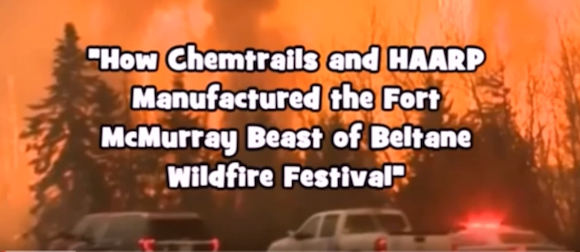
Fort McMurray: The NWO 'Scorched Earth Policy' in Effect. What Did Justin Trudeau Know? - YouTube
Published on May 18, 2016
Brilliant video. Please watch: "Neuberger Hall secret, St Johns in Portland Oregon slated to be bombed!" www.youtube.com...

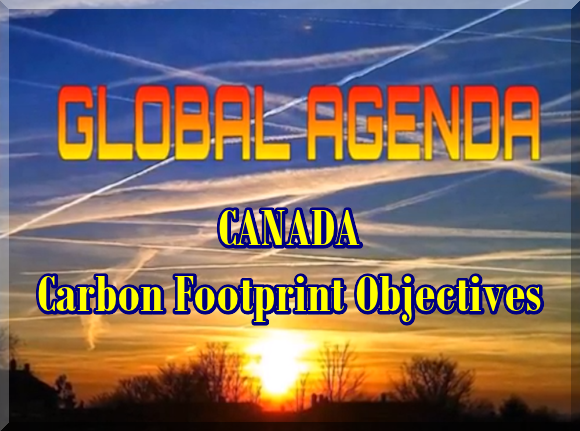

Fort McMurray: The NWO 'Scorched Earth Policy' in Effect. What Did Justin Trudeau Know? - YouTube
Published on May 18, 2016
Brilliant video. Please watch: "Neuberger Hall secret, St Johns in Portland Oregon slated to be bombed!" www.youtube.com...
When the Fort McMurray Wildfires began on May 1st (Beltane Day) I was thinking to myself that it was just another wildfire in Western Canada. (Even though I thought that it was kind of early to be in Wildfire Season). At the time I was not really focused on it, but as the fire intensified I began to look at it - especially after the city of Fort McMurray was evacuated due to the threat and intensity of the crazy out of control fire.


I am living in Toronto and I have worked for a company that has their Head Office in Calgary, Alberta so I am very familiar with Fort McMurray. I am also familiar with Canadian politics and our history of producing 'dirty oil' in Alberta. For years our previous Prime Minister Stephen Harper did not address Canada's 'International Carbon Footprint' and the Powers That Be were obviously NOT impressed. Justin Trudeau became the Prime Minister of Canada in November 2015 and was immediately launched on to the Global Stage.
One of his first stops as Prime Minister was at the Global Warming Summit in Paris, France. This is where he first learned of the New World Order's plans to help him and Canada meet their 'carbon footprint objectives'. Fort McMurray and Canada's dirty oil sands must go away... for good!
a reply to: thorfourwinds
You do realize that the people are coming back in right? There are tens of thousands of people in FM, and growing by the day. Look at the #ymmfire hashtag on twitter, if you want one "unofficial" source.
I'll leave this thread now. The trouble is, some people won't accept that sometimes there is no conspiracy. Sometimes, a fire is just a fire. Smoke is just smoke. It doesn't mean it's covering up a secret.
The people of FM, who by the way, were the beneficiaries of the largest Canadian Red Cross donation drive in history (last I heard it was over $102 million). They're the strongest people in North America, as far as I'm concerned. The way industry has intertwined with Natives, the way the oil companies have committed billions to the environment and the local populations (both in FM and in surrounding small towns, often unrelated to FM activity), and the way the general public shuns those who litter, is something you don't see in most other cities. People harp on these people and their "jacked up trucks" when they should drive a Prius. Get real. These trucks are work tools, often jacked up to get into remote places that factory trucks struggle with (although, I will concede there are some jackasses in the mix...). People like you, people who speak about Fort McMurray with disdain, people who speak about oil companies as if they're criminals, and people who refer to Alberta as some great scar are truly clueless. I invite you and anyone else to come to Alberta and look for yourself - including in Fort Mac. The people of FM are better than you. They're better than most of us.
You do realize that the people are coming back in right? There are tens of thousands of people in FM, and growing by the day. Look at the #ymmfire hashtag on twitter, if you want one "unofficial" source.
I'll leave this thread now. The trouble is, some people won't accept that sometimes there is no conspiracy. Sometimes, a fire is just a fire. Smoke is just smoke. It doesn't mean it's covering up a secret.
The people of FM, who by the way, were the beneficiaries of the largest Canadian Red Cross donation drive in history (last I heard it was over $102 million). They're the strongest people in North America, as far as I'm concerned. The way industry has intertwined with Natives, the way the oil companies have committed billions to the environment and the local populations (both in FM and in surrounding small towns, often unrelated to FM activity), and the way the general public shuns those who litter, is something you don't see in most other cities. People harp on these people and their "jacked up trucks" when they should drive a Prius. Get real. These trucks are work tools, often jacked up to get into remote places that factory trucks struggle with (although, I will concede there are some jackasses in the mix...). People like you, people who speak about Fort McMurray with disdain, people who speak about oil companies as if they're criminals, and people who refer to Alberta as some great scar are truly clueless. I invite you and anyone else to come to Alberta and look for yourself - including in Fort Mac. The people of FM are better than you. They're better than most of us.
If this were true why would russia offer to help fight the fire? I dont think they have anything to gain, we are how you say, comrades.
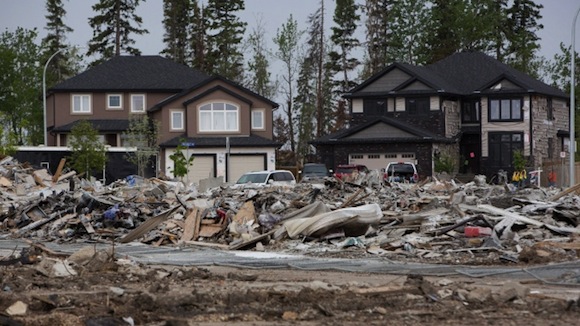
The devastated neighbourhood of Timberlea in Fort McMurray Alta. is shown on Wednesday June 1, 2016. Residents returned after being evacuated during wildfires. THE CANADIAN PRESS/Jason Franson
Ash in Fort McMurray could be dangerous to residents ...
With thousands of displaced Fort McMurray residents returning home this week, some health experts remain concerned about safety after arsenic was detected in the ash left over by the wildfire.
Arsenic is a dangerous toxin that can lead to various types of cancer if inhaled or ingested in large quantities, said health risk assessment expert Stephanie Douma.
In Fort McMurray, the toxin is most likely to be present in the air and in tap water.
Fort McMurray wildfire: Arsenic found in ash, delaying return …
Graham Slaughter, CTVNews.ca
Published Monday, May 30, 2016 8:32AM EDT
Last Updated Monday, May 30, 2016 11:14PM EDT
After a trying month for tens of thousands of people evacuated from wildfire-ravaged Fort McMurray, Alta., there’s mixed news this week. For some, it's time to begin the journey home. For others, the waiting continues.
More than 500 undamaged homes in Fort McMurray have been deemed unsafe after traces of toxic substances, including arsenic, were found in samples of ash. Officials say it could take until September for the harmful ash to be cleared.
“Specifically, the ash has a very high pH (level) which makes it caustic and may cause both skin and respiratory irritation and burns,” said Alberta’s chief medical officer Dr. Karen Grimsrud. “There’s also heavy metals like arsenic in these samples, as well as polyaromatic hydrocarbons, dioxins (and) furans have been detected at concentrations that are above what is recommended for public health.”
In efforts to prevent toxic particles from spreading, a substance called Posi-Shell is being sprayed on charred remains to keep ash from catching in the wind.
The non-toxic substance will blanket the wreckage of burned-out houses in efforts to contain the ash. Scott Long with Alberta Emergency Management Agency described the substance as “very light” and said it has been used in landfills and in wildfire response efforts in Australia.
Despite the efforts, traces of ash could remain in Fort McMurray until the end of summer, officials say.
Bloomberg
The re-opening of the town will be done in phases. Those who lived downtown, an area spared from the worst of damage, were among the people first permitted to return to their homes. Roads leading to the most damaged neighborhoods including Beacon Hill and Abasand were blocked by police.
On Monday, Alberta Premier Rachel Notley announced that as many as 9,000 residents of some badly burned neighborhoods won’t be able to return until the area is cleaned and potentially toxic ash removed, a process that could take until September.
“Today is not the end of this story, it’s not yet the return to normal life and it’s not yet a celebration,” Notley said in a briefing Wednesday. The work of rebuilding the city will take years, she added.
Tests reveal toxic levels of contaminants in Fort Mac soil …
The wildfires that tore into Fort McMurray have left a toxic legacy, with mounds of ash across the city containing harmful levels of contaminants, according to tests conducted over the past month.
Data on soil and ash obtained by The Globe and Mail show that the level of benzene and arsenic found in the three Fort McMurray neighbourhoods hit hardest by the wildfires were 20 times higher than the limit deemed safe by the Alberta government. In all, 19 different metals and compounds were found above recommended limits. The last test data were collected six days before residents were allowed to return to the city.
These findings are why Alberta’s Chief Medical Officer directed the province to stop 2,000 residents from returning to housing still standing in the three worst-hit neighbourhoods. Researchers contacted by The Globe say that while the contaminant levels are high, residents can avoid much of the risk by not touching or inhaling the ash.
Toxic contaminant levels found in Fort McMurray soil
Wednesday, June 8, 2016, 6:50 PM
Tests conducted over the past month reveal mounds of ash left behind by the wildfires in Fort McMurray, Alta. contain harmful levels of contaminants, causing officials to delay re-entry to some residents, the Globe and Mail reports.
Data obtained by the news agency shows the levels of benzene and arsenic in three neighbourhoods were 20 times higher than the safe limit, as per provincial government standards.
Nineteen different metals and compounds were present in higher than recommended limits, the Globe and Mail reports.
Just last year…
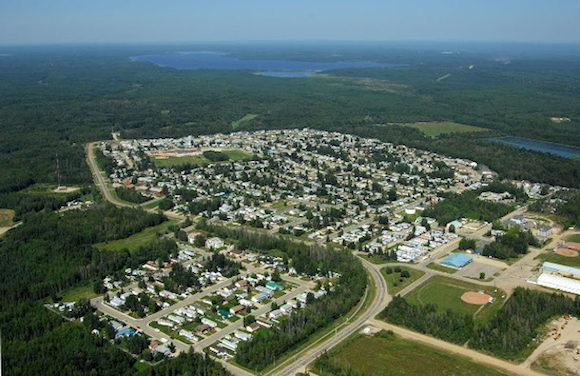
Fox Creek, Alberta: 'Location of earthquake consistent with being induced by hydraulic fracturing operations,' says Alberta Energy Regulator spokesperson.
Did Alberta Just Break a Fracking Earthquake World Record? | The Tyee
29 Jan 2015
More Earthquakes Rattle Alberta - Experts, Regulators Say Fracking to Blame - EnviroNews
June 13, 2015

Fox Creek, Alberta: 'Location of earthquake consistent with being induced by hydraulic fracturing operations,' says Alberta Energy Regulator spokesperson.
Did Alberta Just Break a Fracking Earthquake World Record? | The Tyee
29 Jan 2015
Hydraulic fracturing, a technology used to crack open difficult oil and gas formations, appears to have set off a swarm of earthquakes near Fox Creek, Alberta, including a record-breaking tremor with a felt magnitude of 4.4 last week.
That would likely make it the largest felt earthquake ever caused by fracking, a development that experts swore couldn't happen a few years ago.
More Earthquakes Rattle Alberta - Experts, Regulators Say Fracking to Blame - EnviroNews
June 13, 2015
(EnviroNews World News) — Fox Creek, Alberta — More earthquakes have rattled Alberta, Canada, “from Fox Creek to Peace River [according to] experts and regulators,” The Tyee has reported, and those quakes were man-caused. What’s more, according to those same Alberta regulators, the seismic events were set off as a result of hydraulic fracturing — a.k.a. fracking.
The article in the Canadian publication by Andrew Nikiforuk, highlights two recent episodes measuring 2.2 and 2.1 on the Richter scale respectively. Fox Creek is the same area reported on by Nikifork in The Tyee in January of this year, where operators set off a 4.4 magnitude quake with fracking activities. In that article, Peter Murchland, a spokesperson for the Alberta Energy Regulator was on the record saying, “The location of the earthquake is consistent with being induced by hydraulic fracturing operations.”
a reply to: thorfourwinds
www.cbc.ca...
Yep. More drilling, less fracking.
**actually, in this market, there's no new drilling going on, so we'll just say that they're fracking less too....
www.cbc.ca...
The energy regulator automatically shuts down a fracking site when an earthquake hits a magnitude of 4.0 or higher in the area in which a company is operating.
Yep. More drilling, less fracking.
**actually, in this market, there's no new drilling going on, so we'll just say that they're fracking less too....
edit on 18-6-2016 by
snowspirit because: (no reason given)
Good news for the displaced people of Fort McMurray, Alberta, Canada.
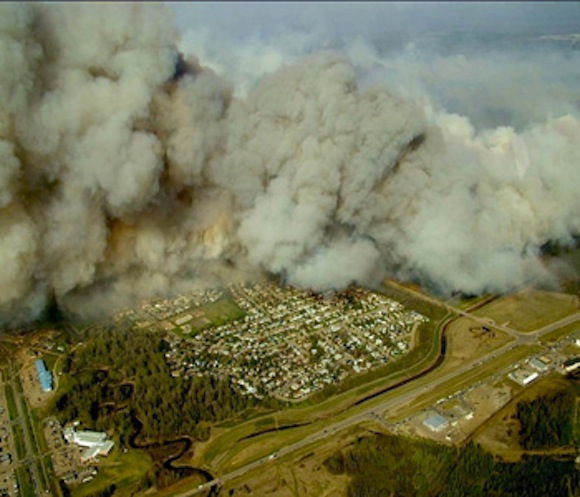 (photo courtesy beaconnews.ca)
(photo courtesy beaconnews.ca)
Governments of Canada and Alberta announce continued support for people of Fort McMurray

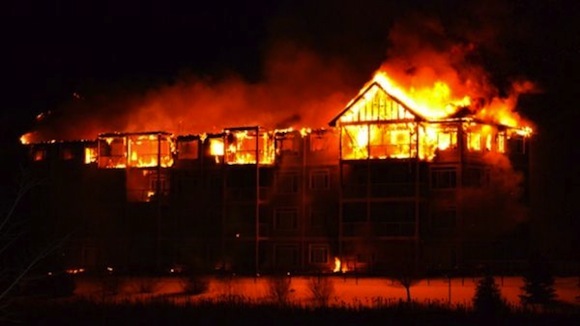 (photo courtesy Courtney Freng)
(photo courtesy Courtney Freng)

Governments of Canada and Alberta announce continued support for people of Fort McMurray
The governments of Canada and Alberta have been working to support and bring relief to the people of Fort McMurray and all those impacted by the devastating wildfires in northern Alberta. Both governments will continue to stand with the community as the focus shifts to recovery and rebuilding efforts.


In keeping with this commitment, the governments of Canada and Alberta today announced the following three measures:
• The Government of Canada will provide an advance payment of approximately $300 million to Alberta through the Disaster Financial Assistance Arrangements (DFAA) program in early July. This interim funding payment, which is based on a preliminary audit review of the damage caused by the wildfires, will be the fastest payment ever provided through the DFAA. The DFAA is a program administered by Public Safety Canada that provides cost-shared financial assistance to provinces and territories, in the event of a large-scale disaster which generates costs that are above what they could reasonably be expected to bear on their own. As discussed at the recent Federal/Provincial/Territorial Ministers meeting on Emergency Management, Ministers agreed to review the DFAA to foster a fiscally sustainable approach to disaster recovery in Canada.
• The governments of Canada and Alberta will deliver on their commitments to match donations made by individuals to the Canadian Red Cross between May 3 and May 31, 2016, in support of the Fort McMurray relief effort. The Government of Canada will match donations made by individuals within Canada for a total of over $90 million, and the Government of Alberta will match donations made by individuals within the province for a total of over $30 million. Both orders of government are working closely with the Canadian Red Cross to determine how the matched funds can be used most effectively to support relief efforts in the impacted communities.
• Both orders of government will implement the Canadian Wildland Fire Strategy that was renewed by federal, provincial and territorial forestry ministers at their meeting in Dawson last week, and strengthen fire-prevention programs such as FireSmart. These measures will help mitigate the impact of climate change and better protect communities in the boreal forest.
edit on 21/6/2016 by thorfourwinds because:
tttyyypppooo
new topics
-
The trial on kids was stopped
Medical Issues & Conspiracies: 39 minutes ago -
Orbs Appear And Form Triangle On Live Cam.
Aliens and UFOs: 2 hours ago -
Biden Has New Bizarre Injuries to His Face
Politicians & People: 3 hours ago -
Something is not adding up in regards to the H-1B commotion
General Conspiracies: 4 hours ago -
Elon Musk Calls for Tommy Robinson to be Freed - and Takes a Dig at Starmer
Politicians & People: 4 hours ago -
Biden to award Presidential Citizens Medal to Liz Cheney and Bennie Thompson
US Political Madness: 5 hours ago -
Just learned a really helpful trick for internet searches
Computer Help: 10 hours ago
top topics
-
Biden Has New Bizarre Injuries to His Face
Politicians & People: 3 hours ago, 10 flags -
Biden to award Presidential Citizens Medal to Liz Cheney and Bennie Thompson
US Political Madness: 5 hours ago, 9 flags -
Just learned a really helpful trick for internet searches
Computer Help: 10 hours ago, 7 flags -
Not off to a good start
General Chit Chat: 12 hours ago, 6 flags -
Elon Musk Calls for Tommy Robinson to be Freed - and Takes a Dig at Starmer
Politicians & People: 4 hours ago, 5 flags -
Something is not adding up in regards to the H-1B commotion
General Conspiracies: 4 hours ago, 5 flags -
Orbs Appear And Form Triangle On Live Cam.
Aliens and UFOs: 2 hours ago, 3 flags -
The trial on kids was stopped
Medical Issues & Conspiracies: 39 minutes ago, 2 flags
active topics
-
Vehicle Strikes people in New Orleans
Mainstream News • 278 • : xuenchen -
How we've changed in 100 years
Ancient & Lost Civilizations • 34 • : Flyingclaydisk -
Orbs Appear And Form Triangle On Live Cam.
Aliens and UFOs • 3 • : BeyondKnowledge3 -
Tesla Cybertruck Explodes in Front of Trump Hotel in Las Vegas
Mainstream News • 111 • : Flyingclaydisk -
The trial on kids was stopped
Medical Issues & Conspiracies • 0 • : annonentity -
-@TH3WH17ERABB17- -Q- ---TIME TO SHOW THE WORLD--- -Part- --44--
Dissecting Disinformation • 3895 • : IndieA -
Strange fog all over the northern hemisphere
General Conspiracies • 43 • : annonentity -
The Acronym Game .. Pt.4
General Chit Chat • 1033 • : tinkerbell99 -
Ukraine halts transit of Russian gas to Europe after a prewar deal expired
Political Conspiracies • 111 • : Oldcarpy2 -
Post A Funny (T&C Friendly) Pic Part IV: The LOL awakens!
General Chit Chat • 7979 • : chiefsmom


